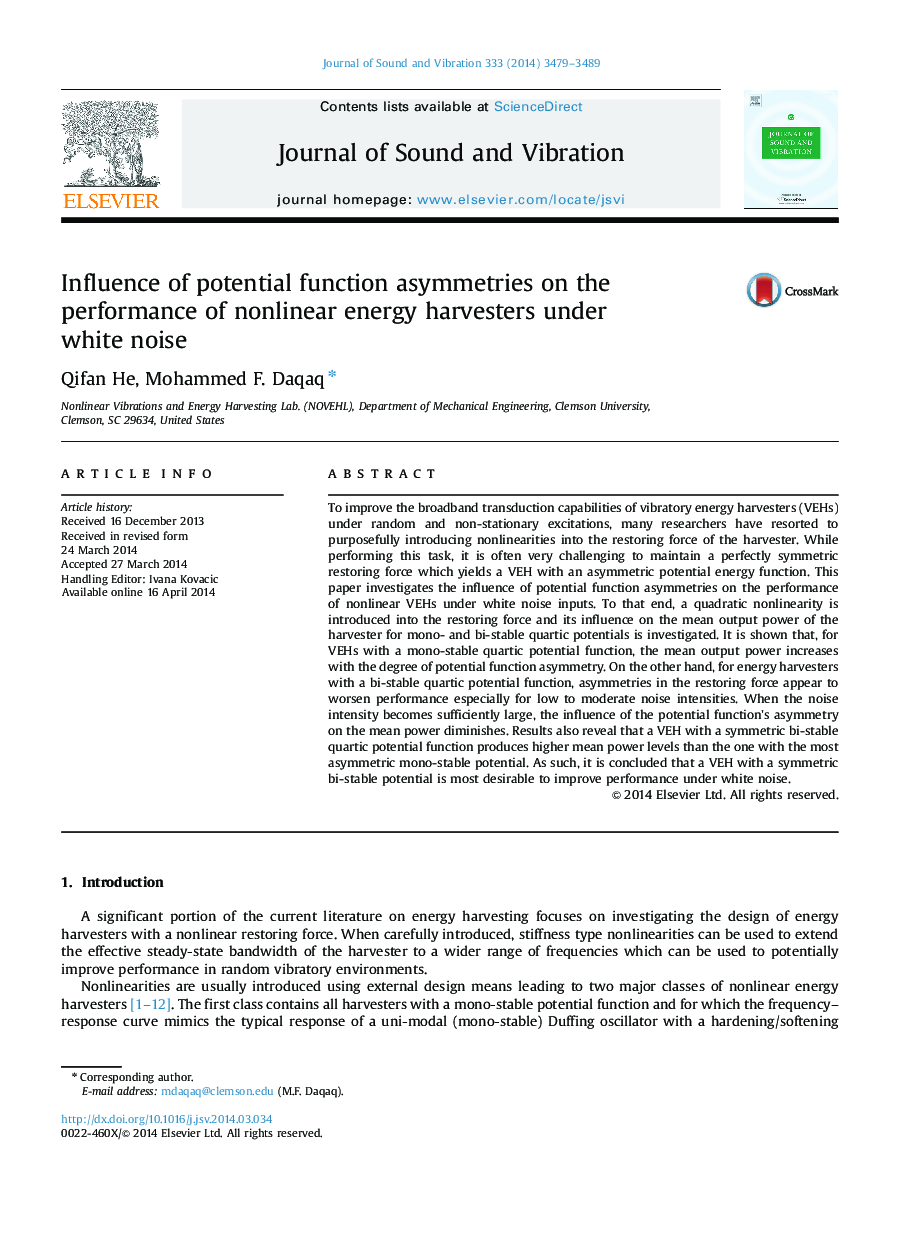| Article ID | Journal | Published Year | Pages | File Type |
|---|---|---|---|---|
| 10289190 | Journal of Sound and Vibration | 2014 | 11 Pages |
Abstract
To improve the broadband transduction capabilities of vibratory energy harvesters (VEHs) under random and non-stationary excitations, many researchers have resorted to purposefully introducing nonlinearities into the restoring force of the harvester. While performing this task, it is often very challenging to maintain a perfectly symmetric restoring force which yields a VEH with an asymmetric potential energy function. This paper investigates the influence of potential function asymmetries on the performance of nonlinear VEHs under white noise inputs. To that end, a quadratic nonlinearity is introduced into the restoring force and its influence on the mean output power of the harvester for mono- and bi-stable quartic potentials is investigated. It is shown that, for VEHs with a mono-stable quartic potential function, the mean output power increases with the degree of potential function asymmetry. On the other hand, for energy harvesters with a bi-stable quartic potential function, asymmetries in the restoring force appear to worsen performance especially for low to moderate noise intensities. When the noise intensity becomes sufficiently large, the influence of the potential function׳s asymmetry on the mean power diminishes. Results also reveal that a VEH with a symmetric bi-stable quartic potential function produces higher mean power levels than the one with the most asymmetric mono-stable potential. As such, it is concluded that a VEH with a symmetric bi-stable potential is most desirable to improve performance under white noise.
Related Topics
Physical Sciences and Engineering
Engineering
Civil and Structural Engineering
Authors
Qifan He, Mohammed F. Daqaq,
